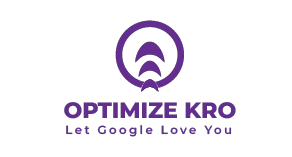In the world of search engine optimization (SEO), keywords play a crucial role in driving traffic and ensuring content is visible to the right audience. Among the various types of search intent, navigational intent is one of the most important, yet often overlooked aspects of keyword strategy. Understanding navigational intent and incorporating it effectively into your SEO approach can help you attract users who are already familiar with your brand, products, or services, and are seeking direct access to specific pages or information.
In this article, we will delve into the concept of navigational intent keywords, their significance in SEO, how they differ from other types of search intent, and the best strategies for optimizing your content with these keywords.

What Are Navigational Intent Keywords?
Navigational intent refers to when users enter a query with the goal of reaching a specific website or page. This search intent is typically exhibited when users are familiar with a brand, product, or service and wish to directly navigate to it online.
For instance, if someone searches for “Amazon,” “Facebook login,” or “Nike official site,” they are expressing navigational intent because they intend to go directly to those platforms. Unlike informational or transactional intent, where users are looking for information or products to buy, navigational intent keywords aim to take the user to a specific destination.
Examples of Navigational Intent Keywords:
- Brand Name: “Nike shoes official site”
- Product Name with Brand: “iPhone 14 official page”
- Website URLs: “Facebook.com”
- Services: “Google Gmail login”
These types of keywords indicate that the user knows exactly where they want to go, and their search is essentially an entry point to a website or service.
The Three Main Types of Search Intent
To better understand navigational intent, it’s essential to recognize the three primary types of search intent:
- Navigational Intent: Users want to reach a specific website or page.
- Informational Intent: Users are searching for information or knowledge about a topic (e.g., “how to make pizza”).
- Transactional Intent: Users are looking to make a purchase or complete an action (e.g., “buy Nike Air Max”).
Each type of search intent can guide your SEO strategy differently, and knowing which one is relevant to your goals will help you create optimized content that addresses the specific needs of your audience.
Key Differences Between Navigational and Other Search Intents:
| Search Intent | Purpose of Search | Examples | Content Strategy |
|---|---|---|---|
| Navigational Intent | User wants to visit a specific website or page | “Facebook login,” “Amazon products” | Focus on branded terms, ensure your website is easily accessible |
| Informational Intent | User seeks to learn or understand something | “How to make pizza,” “What is SEO?” | Create detailed, informative blog posts or guides |
| Transactional Intent | User intends to buy or take an action | “Buy iPhone 14,” “Subscribe to Netflix” | Focus on product pages, offers, and call-to-action buttons |
Why Are Navigational Intent Keywords Important for SEO?
Navigational intent keywords are highly valuable for SEO for several reasons:
- Brand Awareness and Recognition: When users search for your brand directly, they show an active interest in your business. If your website ranks well for your brand’s keywords, it indicates strong brand recognition and trust.
- Improved User Experience: By focusing on navigational intent, you can ensure that users easily find the pages they are looking for. A user-friendly website experience boosts engagement and minimizes bounce rates.
- Targeted Traffic: People searching with navigational intent are often familiar with your brand, meaning they are highly likely to convert or engage with your content. This leads to high-quality, relevant traffic.
- Increased Conversions: Since these users have a direct intent to navigate to a specific page, they may be closer to conversion (signing up, making a purchase, etc.) than users with informational or transactional intent.
- Competitor Advantage: Ranking for branded navigational terms can keep competitors from ranking for those keywords, driving more traffic to your site and improving your overall market position.
How to Optimize for Navigational Intent Keywords
Optimizing for navigational intent keywords requires a focused strategy that ensures your website or page is easy to find and navigate. Below are the key steps to achieve optimization:
1. Optimize Your Brand Name and URL
Your brand name and URL should be clearly present and easy to search. Make sure the domain name reflects your brand or business name. For example, if your brand is “GreenTech Solutions,” your domain could be “www.greentechsolutions.com.”
2. Create Branded Landing Pages
Ensure you have dedicated pages for your brand and product categories. These pages should include branded keywords to help users directly land on them when searching for terms like “GreenTech laptops” or “GreenTech Solutions customer support.”
3. Claim Your Google My Business Profile
Make sure to claim and optimize your Google My Business profile. This ensures that your brand appears in local search results and maps, making it easier for users to find your business and navigate to it.
4. Maintain Brand Consistency Across Platforms
Ensure your brand name, messaging, and logo are consistent across all platforms. This makes it easier for users to identify and navigate to your website when they search for your brand name.
5. Leverage Social Media Platforms
Active and consistent social media profiles can help build your brand’s visibility and recognition. Many users look to platforms like Facebook, Instagram, or LinkedIn to quickly access brand information. Link your website in your social media bios and posts to encourage direct navigation.
6. Enhance Your Site’s Internal Linking Structure
Your website’s internal structure should allow easy access to key pages through clear navigation menus and internal links. This helps both users and search engines to easily identify important pages that align with navigational intent.
7. Optimize for Featured Snippets and Knowledge Panels
Google often displays brand-related information in Knowledge Panels or Featured Snippets. This means optimizing for these features can enhance your visibility when users search for brand names or related queries.
A List of Best Practices for Navigational Intent SEO
Here is a summarized list of best practices for optimizing navigational intent keywords:
- Use branded keywords in your meta titles, headers, and URLs.
- Optimize landing pages to include essential brand-related information.
- Claim and optimize your Google My Business profile for local searches.
- Ensure consistent brand messaging across all digital platforms.
- Provide clear internal links and intuitive navigation on your website.
- Leverage structured data for featured snippets.
- Encourage reviews and positive feedback on platforms like Google and Trustpilot.
What Our Clients Say
Trusted by contractors and local businesses for proven Local SEO Services.
John M. – General Contractor
“These guys transformed my Google Maps ranking. More calls, more local leads, and better visibility!”
Sarah L. – Roofing Business
“Within 3 months, my business went from page 3 to the top 3 listings. Highly recommend their Local SEO service!”
David K. – Plumbing Services
“Affordable and effective SEO. My local service calls doubled in less than 90 days.”
Frequently Asked Questions (FAQs)
1. What is the difference between navigational and informational search intent?
Navigational search intent is when a user is looking to visit a specific website or page, while informational search intent is when a user is searching for knowledge or answers to specific questions. For example, “Nike official site” is navigational, while “How to pick the best running shoes” is informational.
2. Can navigational intent keywords help my SEO ranking?
Yes, ranking for branded navigational keywords can increase your visibility and authority. Users searching for your brand are likely to find your website more easily, boosting overall traffic and engagement.
3. How can I track navigational intent keywords?
You can track navigational intent keywords through tools like Google Analytics, SEMrush, or Ahrefs by analyzing organic search traffic and identifying keywords that lead directly to your website.
4. Why is it important to optimize for navigational intent?
Optimizing for navigational intent helps your website rank higher when users search for your brand or products directly, enhancing brand visibility, driving targeted traffic, and improving user experience.
5. Can competitors rank for navigational intent keywords?
While competitors can potentially rank for navigational keywords, it is crucial to ensure that your brand and relevant branded keywords are clearly represented on your website. This makes it less likely that competitors will outrank you for these important searches.
Conclusion
Navigational intent keywords are vital to a comprehensive SEO strategy. These keywords not only help improve your brand’s visibility but also ensure that users can quickly access the pages they are looking for. By optimizing for navigational intent, you can boost brand recognition, drive targeted traffic, and ultimately improve conversions. Understanding how to effectively incorporate navigational intent into your SEO efforts is key to staying competitive in today’s digital landscape.
By combining best practices such as optimizing URLs, creating branded landing pages, and ensuring brand consistency, you can harness the power of navigational intent to enhance your overall SEO strategy.

Gulfam Qamar is a seasoned Local SEO expert with a proven track record of helping businesses boost their online visibility and dominate local search results. With deep expertise in Google Business Profiles, on-page optimization, and local citation strategies, Gulfam helps brands connect with nearby customers and grow sustainably. When he’s not optimizing websites, he’s sharing actionable SEO tips and insights to empower small businesses in the digital space.

